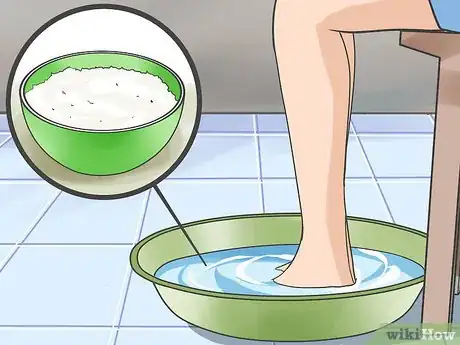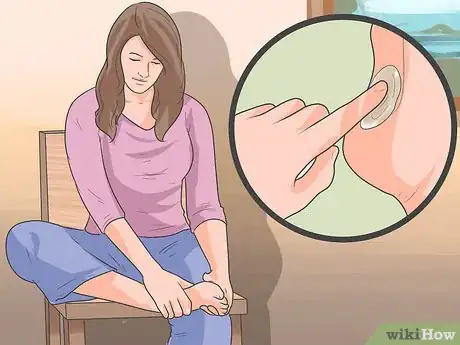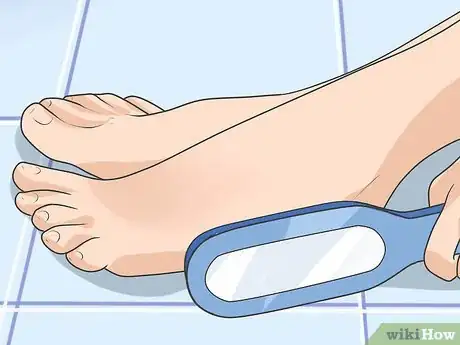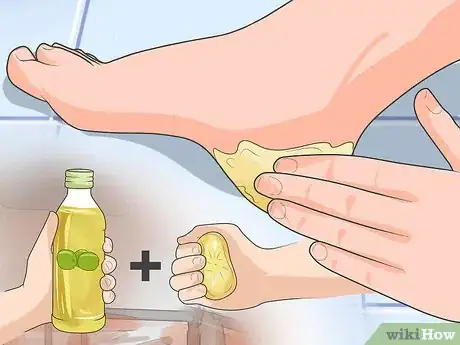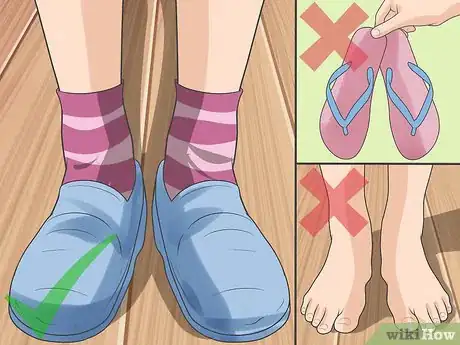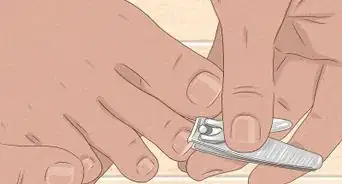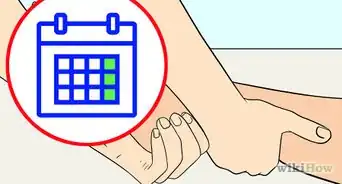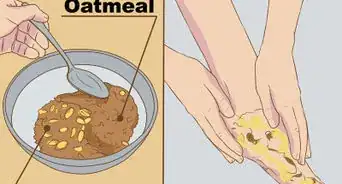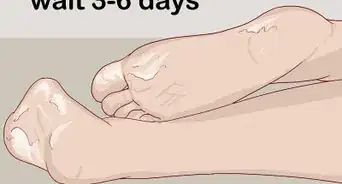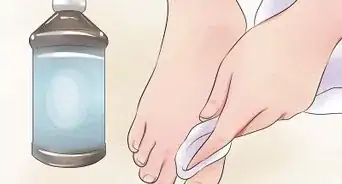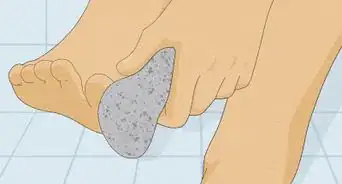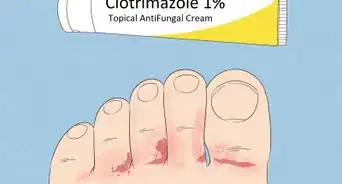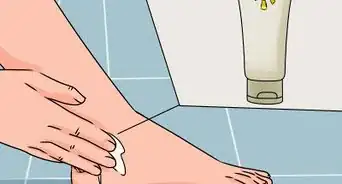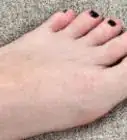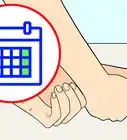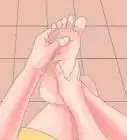This article was co-authored by R. Sonia Batra, MD, MSc, MPH. Dr. R. Sonia Batra is a board certified Dermatologist and the Founder of Batra Dermatology based in Los Angeles, California. With over 15 years of experience, Dr. Batra specializes in lasers, medical devices, patient and public medical education, and skin cancer research. She received her Bachelor’s degree, Master’s degree in Public Health, and her Doctor of Medicine (MD) degrees from Harvard University. As a Rhodes Scholar, she earned a Master’s degree in Molecular Genetics at the University of Oxford. She completed her residency training in Dermatology at Stanford University. Dr. Batra has contributed and reviewed for the Journal of Dermatologic Surgery, the Journal of the American Academy of Dermatology, and JAMA Dermatology. She is also a co-host of CBS’ Emmy award-winning television show, The Doctors.
There are 12 references cited in this article, which can be found at the bottom of the page.
This article has been viewed 70,766 times.
Are you aggravated or embarrassed by your dry, cracked heels? Dry or cracked heels might seem impossible to get rid of, especially if you aren’t taking the right steps to care for your feet. There are many different methods to remedy this condition, and alleviate your frustration.
Steps
Healing With Home Heel Care
-
1Soak feet in warm water. Use your bathtub, or fill a container large enough to submerge your feet in. Soaking your feet in warm water will benefit your feet in a handful of different ways, such as hydrating your skin, soothing any foot pain, and getting them ready to be exfoliated.
- Try putting some Epsom salt into your foot bath. Epsom salt is used for a number of conditions, but it can help your dry heels by soothing the dry skin and killing off bacteria or fungi that might be in the skin.[1]
- Sit in the foot bath for at least 5 minutes. Stay in it longer if you have the time. The longer you let your feet soak, the easier it will be to scrub off dead skin when the time comes to exfoliate. Staying in for a window of 5-15 minutes is ideal. But don’t soak and treat your feet this way more than 3 times a week, as it could ultimately dry out your feet.[2]
-
2Remove calluses with a homemade scrub. You can use a number of ingredients in your scrub, most of which you can find in your bathroom cabinet or kitchen pantry. What you decide to use in your scrub will depend on your preferences, and/or any allergies you might have to various ingredients.
- Try a simple scrub with 2 tablespoons (29.6 ml) brown sugar, 1 teaspoon lemon juice, 1 tablespoon (14.8 ml) honey, and 1 tablespoon olive oil. Mix these ingredients in a bowl. After soaking, gently rub the mixture into your heels in a circular motion.
- You can also try adding a cup of milk to your foot bath. Soak in the milk and water mixture for 5-10 minutes. Make a paste out of 4 tablespoons (59.1 ml) of sugar or salt, and ½ cup of baby oil or coconut oil. After soaking, massage this mixture into your heels with a pumice stone to exfoliate dead skin away and soften your heels.
Advertisement -
3Use a foot file to remove dead skin. If you don’t already have a foot file, they are easy to find in the beauty or personal care aisle of your local grocery or big box store. One side of the foot file will look a little bit like a grater, while the other side will have a sandpaper surface.
- You can opt to file your feet while they are still dry, prior to soaking. Sometimes wet skin makes it more difficult to see the driest areas of your heels, so you can file your heels before soaking and scrubbing if you choose.[3]
- Be careful not to file your heels too much. Once you notice the skin feeling smoother and softer, move on to another spot or your other foot. Over filing might lead to your skin being more sensitive, or prone to drying out again much faster. Avoid filing your feet more than three times a week.
-
4Moisturize your heels. After soaking, filing, and scrubbing them, you will want to make sure to lock in moisture on your heels.[4] You can use a variety of moisturizers, whether you choose to make your own or use one you have on hand.
- You can make your own heel moisturizer by combining a tablespoon of olive oil with a few drops of either lemon or lavender oil. Mix them together and apply the mixture to your heels. Wear socks to keep the moisture in as it soaks into your skin.[5]
- If you have a bottle of moisturizer on hand, you can use that. Make sure you put on a thick layer, then let it soak in before putting on another.
Seeking Professional Services or Products
-
1Get a pedicure at a salon. Head to your local nail or beauty salon and get a professional pedicure. They range in price from anywhere between $20 to well over $100, so make sure you shop around and see which location offers something in your price range.
- Different salons might use different products or offer different services. Do your homework and decide which salon offers what you’re looking for. Luxury day spas might over more extravagant pedicures, while your local nail salon might be a little less lavish, but still get the job done.
- Wherever you decide to get your pedicure, make sure the salon appears to be clean and safe. Make sure the technician is certified or licensed, and uses sterilized tools.[6]
- Don’t hesitate to ask your technician to focus on your heels while doing your pedicure. Let them know you have trouble with dry heels, and they will spend more time filing and smoothing them for you.
-
2See a dermatologist or podiatrist. If your dry heels are causing more concern than just irritation, you might want to seek out the advice of a dermatologist or podiatrist. A dermatologist can address skin-related concerns, while a podiatrist focuses specifically on foot health.
- If you begin to have trouble walking without pain, have trouble standing on your feet for too long at time, or your at-home remedies are no longer working or effective, you might need to seek the advice of a doctor.[7]
- People with certain medical conditions, like diabetes, can suffer from foot health problems. If you have diabetes or any kind of medical condition that affects your nerves, you will want to take extra caution and stay under the care of a doctor when tending to your heels.[8]
-
3Purchase specialty creams, scrubs, or medicated balm. There are a great number of options for you to choose from when it comes to specialty creams, balms, and scrubs for your feet. The personal care aisle at your local drug store is the best place to check.
- Read the labels of each cream. See which cream or balm best addresses your specific needs. Some foot creams are made specifically for dry or cracked heels, and will only be applied to this area.[9]
- If you have sought the care or advice of a doctor, they might prescribe you a medicated cream. Apply any prescription cream or balm according to your doctor’s instructions.
Establishing a Heel Care Routine
-
1Avoid wearing open shoes or walking barefoot. You may have noticed that your heels suffer when you wear very flat and open-backed shoes, like flip-flops or sandals. When you expose your heels by wearing these shoes or walking barefoot, they are more prone to dryness, cracking, and irritation.
- Walking barefoot or in open-backed shoes will cause your skin to callus to create a protective barrier on your feet. By keeping your feet in closed shoes, your skin will not have to generate this callused barrier.[10]
- When possible, wear socks and closed shoes, like tennis shoes or sneakers. Not only will this protect the skin on your heels, but it will also help your posture and joint health by supporting your arches.
-
2Adjust your diet. Hydration is important, but in reality, drinking more water won’t have much of an effect on your dry skin. Try incorporating more fatty acids into your diet. These are found in things like nuts, olive oil, and salmon.[11]
- Studies show that increasing your intake of borage oil or flaxseed oil supplements can help increase the moisture in your skin, and relieve dryness. Try taking at least 2.2 grams (0.08 oz) of these supplements per day.[12]
-
3Keep feet clean and moisturized. It goes without saying that proper hygiene and cleanliness can maintain various aspects of your bodily health, but making sure you keep your feet clean is especially important. Keeping your feet clean will prevent any kind of bacteria or fungus from growing on your heels, and it can help reduce dryness.[13]
- You might notice that when you wash your hands often, they dry out. The same can happen with your feet. So, it’s important to keep your feet moisturized in correlation with keeping them clean. After washing or showering, apply moisturizer to your heels and feet.[14]
- Try applying moisturizer to your heels before bed and putting on a pair of thick socks.[15] The socks will keep the moisture locked in your heels while you sleep. Doing this over time will help reduce the dryness in your heels.
- Most stores sell special socks for keeping your feet and heels soft. They come infused with lotion, or gel inserts on the heels. You might consider trying a pair of these to wear to bed.
-
4Avoid taking very hot or excessively long showers. Staying in a hot bath or shower for too long can dry out your feet and heels. To keep this from happening, try not to turn the water temperature up too high, or stay in the shower for too long.[16]
- Certain soaps you use in the shower might also be drying to your heels. Make sure you are using a mild soap, and consider trying a soap that has a moisturizer built into it.[17]
Expert Q&A
-
QuestionHow can I soften my heels overnight?
 R. Sonia Batra, MD, MSc, MPHDr. R. Sonia Batra is a board certified Dermatologist and the Founder of Batra Dermatology based in Los Angeles, California. With over 15 years of experience, Dr. Batra specializes in lasers, medical devices, patient and public medical education, and skin cancer research. She received her Bachelor’s degree, Master’s degree in Public Health, and her Doctor of Medicine (MD) degrees from Harvard University. As a Rhodes Scholar, she earned a Master’s degree in Molecular Genetics at the University of Oxford. She completed her residency training in Dermatology at Stanford University. Dr. Batra has contributed and reviewed for the Journal of Dermatologic Surgery, the Journal of the American Academy of Dermatology, and JAMA Dermatology. She is also a co-host of CBS’ Emmy award-winning television show, The Doctors.
R. Sonia Batra, MD, MSc, MPHDr. R. Sonia Batra is a board certified Dermatologist and the Founder of Batra Dermatology based in Los Angeles, California. With over 15 years of experience, Dr. Batra specializes in lasers, medical devices, patient and public medical education, and skin cancer research. She received her Bachelor’s degree, Master’s degree in Public Health, and her Doctor of Medicine (MD) degrees from Harvard University. As a Rhodes Scholar, she earned a Master’s degree in Molecular Genetics at the University of Oxford. She completed her residency training in Dermatology at Stanford University. Dr. Batra has contributed and reviewed for the Journal of Dermatologic Surgery, the Journal of the American Academy of Dermatology, and JAMA Dermatology. She is also a co-host of CBS’ Emmy award-winning television show, The Doctors.
Board Certified Dermatologist Apply a moisturizer like Vaseline onto your feet and put on socks before going to bed.
Apply a moisturizer like Vaseline onto your feet and put on socks before going to bed.
Warnings
- Watch for any allergic reactions to balms or creams. Always read the label to make sure the creams you choose don’t contain anything you have an allergy to.⧼thumbs_response⧽
Things You'll Need
- Warm water
- Bathtub or large bowl
- Lotion
- Olive, Coconut, or Baby oil
- Brown sugar, white sugar, or salt
- Lemon juice
- Foot file
- Pumice stone
References
- ↑ http://www.canyonranch.com/your-health/whole-beauty/nurture-yourself/your-home-spa/the-healing-benefits-foot-soaks
- ↑ https://mcdermottfootcare.com/2012/01/28/8-tips-for-dry-cracked-heels/
- ↑ http://www.dailymail.co.uk/femail/article-2180761/Get-toes-sandal-ready-Five-easy-steps-fabulous-feet.html
- ↑ R. Sonia Batra, MD, MSc, MPH. Board Certified Dermatologist. Expert Interview. 19 February 2021
- ↑ http://www.footvitals.com/skin/dry-feet.html
- ↑ https://www.aad.org/public/skin-hair-nails/nail-care/manicure-safety
- ↑ http://www.footvitals.com/skin/dry-feet.html
- ↑ http://www.aofas.org/footcaremd/overview/pages/adult-foot-health.aspx
- ↑ http://makeupandbeauty.com/best-foot-creams-to-repair-cracked-heels/
- ↑ https://bellatory.com/skin/Home-Remedies-for-Dry-Cracked-Calloused-or-Rough-Feet
- ↑ http://www.realsimple.com/beauty-fashion/skincare/does-drinking-water-hydrate-skin
- ↑ http://www.realsimple.com/beauty-fashion/skincare/does-drinking-water-hydrate-skin
- ↑ http://www.readersdigest.ca/health/healthy-living/7-ways-keep-your-feet-healthy/
- ↑ http://www.webmd.com/beauty/skin/ten-winter-skin-care-tips?page=2
- ↑ R. Sonia Batra, MD, MSc, MPH. Board Certified Dermatologist. Expert Interview. 19 February 2021
- ↑ https://bellatory.com/skin/Home-Remedies-for-Dry-Cracked-Calloused-or-Rough-Feet
- ↑ https://bellatory.com/skin/Home-Remedies-for-Dry-Cracked-Calloused-or-Rough-Feet
About This Article
If your heels are dry and cracked, you can soften them at home with some simple tricks. If you have calluses or dead skin on your feet, make your own foot scrub to get rid of them. Mix 2 tablespoons of brown sugar, 1 teaspoon of lemon juice, 1 tablespoon of honey, and 1 tablespoon of olive oil. Then, soak your feet in a bath or tub of warm water for 15 minutes. Add some Epsom salts to the water to soothe your feet and kill off bad bacteria too. After soaking your feet, gently rub the scrub into your heels in a circular motion. Finally, apply a moisturizing product to keep your skin hydrated. Do this up to 3 times a week to keep your feet soft. To avoid forming new calluses, avoid wearing open shoes or walking barefoot. For more tips, including how to file your feet to remove dead skin, read on!
